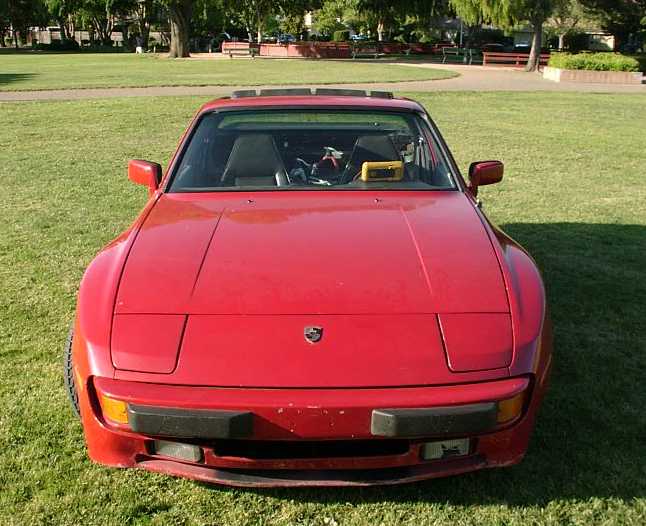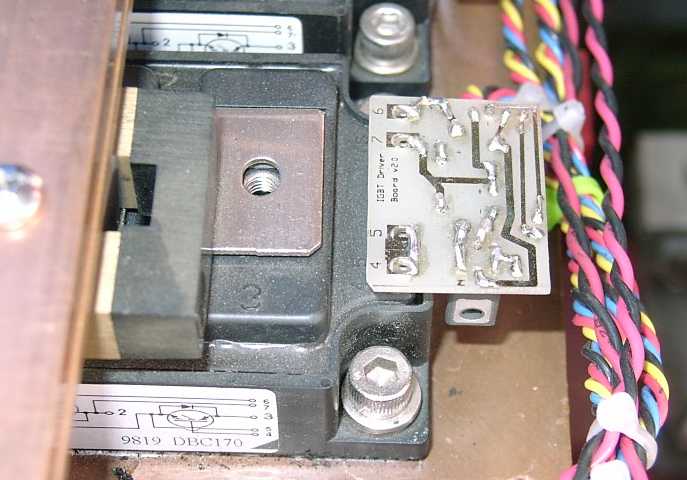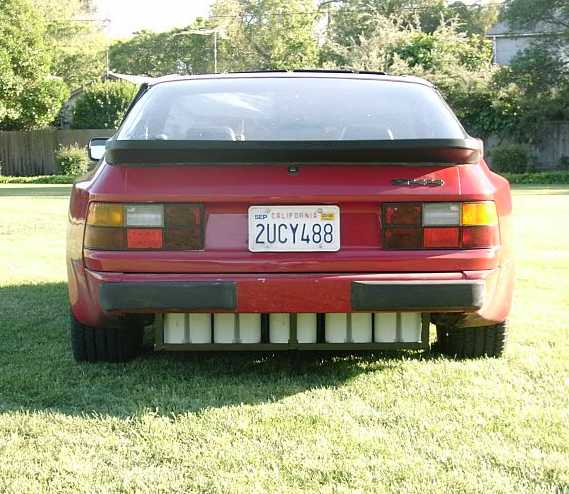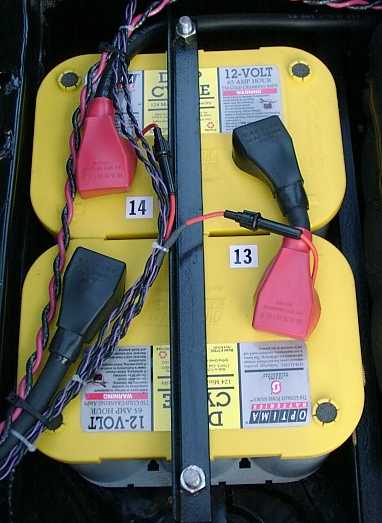
Electric Porsche 944

**NEW Stuff**
- 2nd Generation Hybrid Pusher Trailer Completed!
Click for details/pictures
- World Record 1/4 mile time
(NEDRA SC/B class) 17.28 seconds, 79.4 mph
Performance:
Top Speed: 104 mphMore Pictures





Why an electric car?
Building an electric car is a wonderful challenge and combination of many things that I enjoy working on. Power Electronics, Batteries, Electric Motors, and Micro-controllers all come together. While the range is short (30-40 miles) the performance is great with a high-voltage battery system and a high-current motor controller.
The main challenge of this project has been building a motor controller from scratch. The controller is capable 240 Volts and 1200 Amps (motor or battery) that's 288 kilowatts! The batteries and clutch are really the limiting elements in the car right now, not the controller.
In addition to the general fun of
building this project it is also fun
to drive with quick acceleration. My
commute from Midtown Palo Alto to
Stanford is only about 5 miles and
the round-trip is easily within
range while still driving the car
like a Porsche. And let's not forget
the standard EV benefits of being
relatively quiet, emission-free, and
rechargeable in the garage. Our
house is now also purchasing 100%
green energy from the Palo Alto
Municipal Utility (for a 3 cent/kwh
premium) so the car is truly a zero
emission vehicle being recharged by
some mix of wind, small hydro, and
geothermal energy. CPAU "Future Green
100" Program Link
Project Details
The Motor Controller:

Features: Programmable current limit 100-1200 motor amps, automatic over-temperature current limit cut-back, water-cooled copper heat sink, low-loss IGBT modules, and motor over-speed limit.
Processor: Microchip PIC 16F877 These are excellent micro-controllers running at 5 MIPS and 20MHz with 8kb of onboard program FLASH memory. They also have two on-board 10-bit PWM generators, eight 10-bit ADC converter channels, and a serial communication generator.
Power Components: IGBT Modules, six 500 Amp 600 Volt modules used (International Rectifier, GA500TD60U), Fast recovery diode modules, four 560 amp modules (International Rectifier HFA280NJ60C), Filter capacitors, six 450 volt 1000uF high ripple current, low ESR, screw-terminal caps (Mallory CGH102T450V3L), Heat sink, custom built water-cooled copper cold plate, isolated DC current transducer from LEM international.
Coolant System: The water cooling system uses a small 12V DC pump for circulation through a small plastic reservoir and an oil-cooler radiator. These radiators can be found at just about any auto parts store and are a good size. The pump is made by ShurFlo (model number 2088-423-344). It circulates around 2.8 gpm with a quiet 3-chamber diaphragm pump and permanent magnet motor. The current draw is between 2-3 amps. West Marine sells a wide variety of these pumps at competitive prices.
Pictures will be added soon of the various components, the fascinating test setups, exciting test successes, the more exciting test failures, and the complete assembly.
The Motors:
Two, 8" Advanced DC motors belted together and driven in series by the motor controller. One motor has a custom coupler that was machined to mate with the flywheel/clutch pressure plate. This motor is directly in line with the driveshaft running back to the transmission. On the outside of the coupler is a synchronous belt sprocket. This allows power to be transferred from a motor mounted above, through a Gates PolyChain GT belt, into the same coupler and clutch.
The Batteries:

Twenty 12V, deep-cycle Optima "yellow-top's" (D750S) for a total system voltage of 240 and a total pack weight of about 850 pounds. Peak power (at 9 kw per battery) ~180 kw.
Optima Battery Home PageBattery Mounting:
6 batteries in front of the motors roughly where the radiator used to be in front.Other Components:
DC-DC Converter: A custom modified Power-One power supply. This allows for an input of 240VDC with a continuous DC output of 40 amps at between 11-14 volts (adjustable). There were no commercial DC-DC converters available that took an input voltage this high. The converter is used to keep a small sealed lead acid battery topped off for load surges.
Site Last
Updated On:
Feb/14/2002
(archive clone from deleted jstaubel.com
page -
modified by
brucedp)
- Home
-